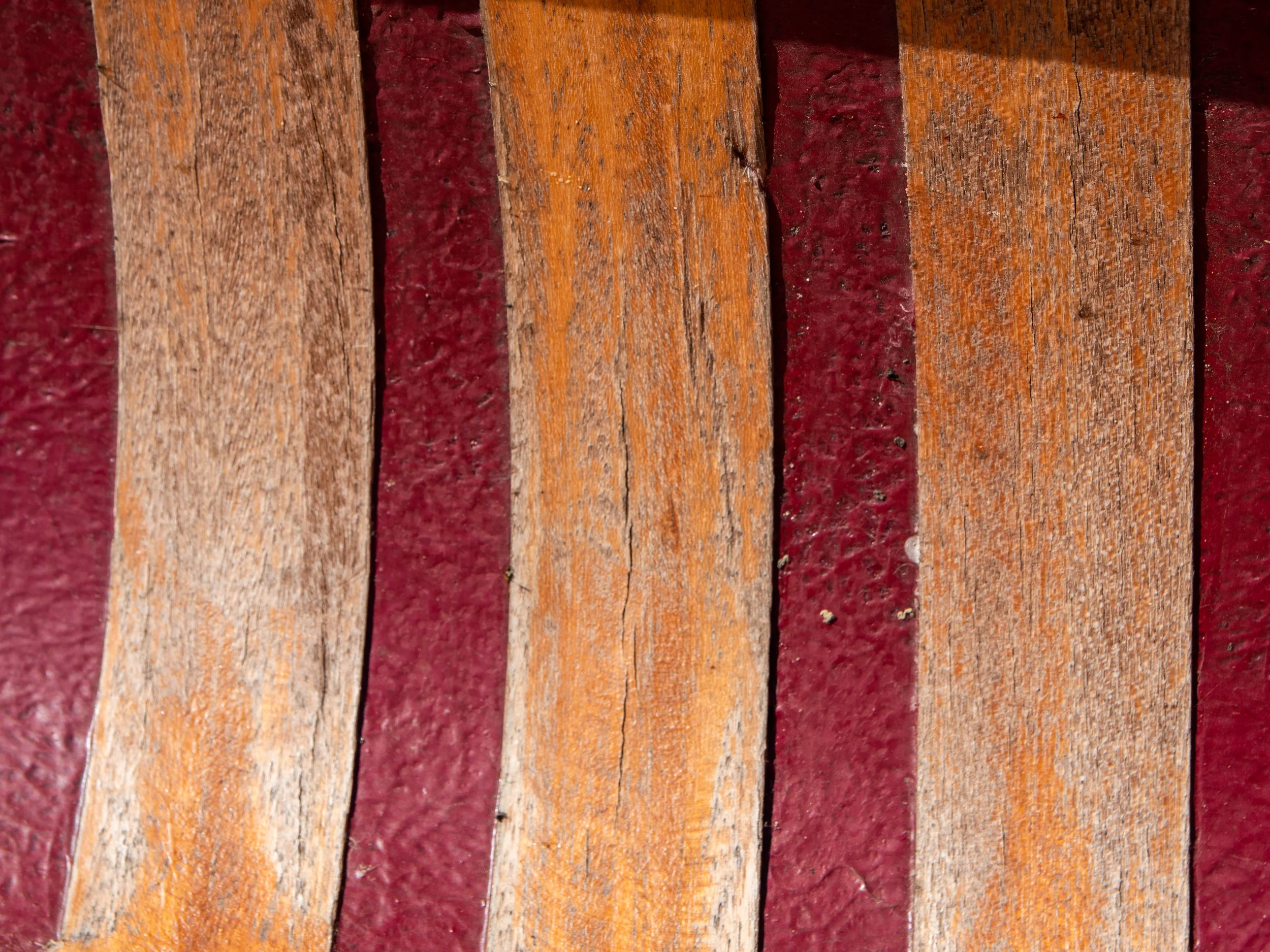The Backstory:
This 15’ Rehbein sport boat dates to 1954 or ’55, according to original owner Bob M. He bought the boat from Duluth builder Lloyd Rehbein as a gift to himself upon his discharge from service in the Korean War. He spent years hauling it and a 5-horsepower outboard all through Minnesota’s Arrowhead in search of ducks and walleye. Eventually, the boat wore Bob out so he set it upside down atop a junked milk delivery truck that served as a tool shed and he walked away from it. Until we stopped in. A quick inspection showed a lot of deterioration, but the original fiberglass skin had done well in protecting the hull from rain, snow and UV damage. We struck a bargain, threw it in the back of our truck, and got it back to the shop. This boat showed all the hallmarks of Rehbein’s work: utilitarian carpentry and materials; thick, sharp-angled ribs; ferrous fasteners; and extensive use of black ash. Our restoration plan was to stay true to Mr. Rehbein’s work, but to make aesthetic and functional upgrades where they made sense.
The Work:
The old deck had a beautiful grain pattern so care was taken in selecting stock for its replacement. A bird’s-mouth scarf was used to epoxy a new section of black ash to the stem that had to be cut back to good wood. All ferrous fasteners including those seen in this photo were replaced with brass. Two courses of planking had to be replaced all along the sheer line.
Rough cut bench seats of knotted pine were replaced with cedar seats shaped with softer lines, and aluminum seat thwarts were replaced with hand carved thwarts to hold gun or rod.
Approximately 95% of the rib tops had to be cut back to good wood and replaced with new tops. Only a half dozen or so ribs had to be pulled and replaced with new. All planking in the stern quarter was cut out in staggered fashion and replaced with new, as were any places in the field that showed cupping or splits.
The original transom was replaced with a thicker transom made of maple and oak epoxied together. This gave it the thickness required to fit a rabbeted edge that can securely hold the new transom rib, planking and terminal edge of canvas.
The original oars were restored and painted. However, the zinc plated hardware was replaced with bronze edge-mounted sockets and North River-style pinned oar locks. The rough transom knees were replaced with hand carved knees of black ash.
The fiberglass skin was replaced with #8 cotton duck canvas. Apologies to Mr. Rehbein who made great use of fiberglass.
Measurements:
Beam: 4' at midship
Length: 15'
Depth: 16" at mid ship | 14" at transom | 18" at bow



































